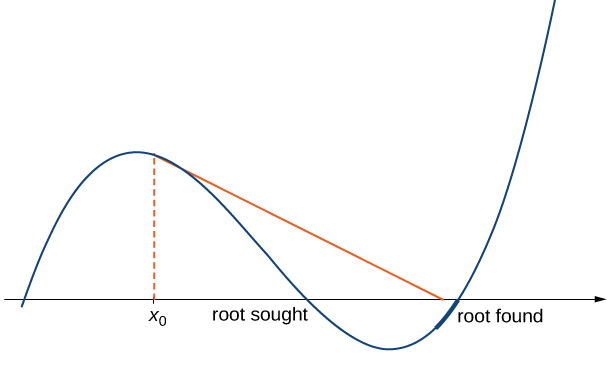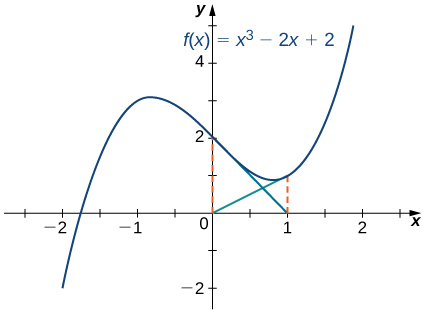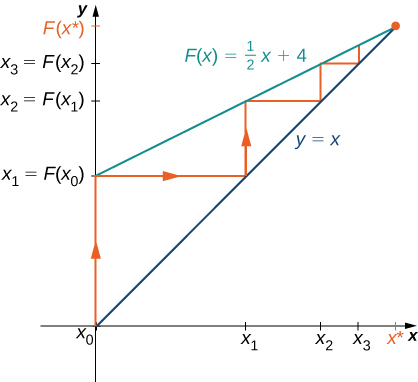| << Chapter < Page | Chapter >> Page > |

Consider the function Let Show that the sequence fails to approach a root of
For the derivative is Therefore,
In the next step,
Consequently, the numbers continue to bounce back and forth between and and never get closer to the root of which is over the interval (see [link] ). Fortunately, if we choose an initial approximation closer to the actual root, we can avoid this situation.

From [link] , we see that Newton’s method does not always work. However, when it does work, the sequence of approximations approaches the root very quickly. Discussions of how quickly the sequence of approximations approach a root found using Newton’s method are included in texts on numerical analysis.
As mentioned earlier, Newton’s method is a type of iterative process. We now look at an example of a different type of iterative process.
Consider a function and an initial number Define the subsequent numbers by the formula This process is an iterative process that creates a list of numbers This list of numbers may approach a finite number as gets larger, or it may not. In [link] , we see an example of a function and an initial guess such that the resulting list of numbers approaches a finite value.
Let and let For all let Find the values Make a conjecture about what happens to this list of numbers as If the list of numbers approaches a finite number then satisfies and is called a fixed point of
If then
From this list, we conjecture that the values approach
[link] provides a graphical argument that the values approach as Starting at the point we draw a vertical line to the point The next number in our list is We use to calculate Therefore, we draw a horizontal line connecting to the point on the line and then draw a vertical line connecting to the point The output becomes Continuing in this way, we could create an infinite number of line segments. These line segments are trapped between the lines and The line segments get closer to the intersection point of these two lines, which occurs when Solving the equation we conclude they intersect at Therefore, our graphical evidence agrees with our numerical evidence that the list of numbers approaches as


Notification Switch
Would you like to follow the 'Calculus volume 1' conversation and receive update notifications?